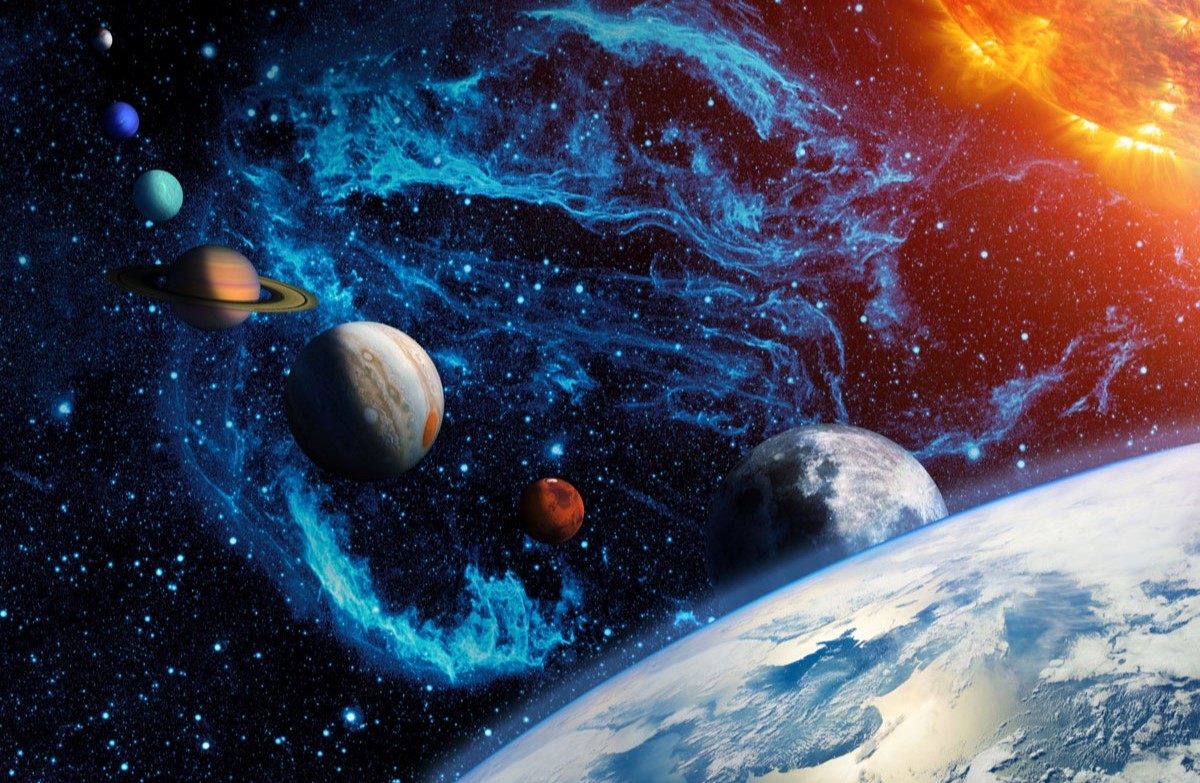
What makes our planetary system unique? Our planetary system, known as the Solar System, is a fascinating collection of celestial bodies orbiting the Sun. It includes eight planets, dwarf planets like Pluto, moons, asteroids, and comets. Each planet has its own set of characteristics, from the scorching surface of Mercury to the icy rings of Saturn. Earth stands out as the only known planet with life. The Solar System's vastness and diversity offer endless opportunities for exploration and discovery. Whether you're curious about the red dust storms of Mars or the gas giants like Jupiter, there's always something new to learn. Buckle up as we journey through 26 intriguing facts about our cosmic neighborhood!
Key Takeaways:
- The Sun is the powerhouse of our solar system, making up almost 100% of its mass. It's mainly made of hydrogen and helium, and its core reaches a scorching 15 million degrees Celsius.
- Earth is the only known planet to support life, with its vast oceans and life-sustaining atmosphere. It also has a protective magnetic field and a loyal companion in the form of the Moon.
The Sun: Our Solar System's Star
The Sun is the heart of our solar system. It provides the energy that sustains life on Earth and influences the orbits of all the planets.
- The Sun accounts for about 99.86% of the total mass of the solar system.
- It is composed mainly of hydrogen (about 74%) and helium (about 24%).
- The Sun's core reaches temperatures of around 15 million degrees Celsius.
- Light from the Sun takes approximately 8 minutes and 20 seconds to reach Earth.
Mercury: The Swift Planet
Mercury is the closest planet to the Sun. Despite its proximity, it isn't the hottest planet in our solar system.
- Mercury orbits the Sun in just 88 Earth days.
- It has a very thin atmosphere, composed mostly of oxygen, sodium, and hydrogen.
- Temperatures on Mercury can swing from -173°C at night to 427°C during the day.
- Mercury has no moons or rings.
Venus: Earth's Twin
Venus is similar in size and structure to Earth but has a vastly different environment.
- Venus has a thick, toxic atmosphere filled with carbon dioxide and clouds of sulfuric acid.
- It rotates in the opposite direction to most planets, meaning the Sun rises in the west and sets in the east.
- Surface temperatures on Venus can reach up to 471°C, making it the hottest planet in our solar system.
- Venus has more volcanoes than any other planet, with over 1,600 major volcanoes.
Earth: The Blue Planet
Earth is the only planet known to support life. Its unique atmosphere and liquid water make it habitable.
- About 71% of Earth's surface is covered by water.
- Earth's atmosphere is composed of 78% nitrogen, 21% oxygen, and trace amounts of other gases.
- Earth has one natural satellite, the Moon, which influences tides and stabilizes the planet's rotation.
- The planet's magnetic field protects it from harmful solar radiation.
Mars: The Red Planet
Mars has captivated human imagination for centuries. Its red color comes from iron oxide, or rust, on its surface.
- Mars has the largest volcano in the solar system, Olympus Mons, which is about 13.6 miles high.
- The planet has two moons, Phobos and Deimos.
- Mars experiences seasons due to its axial tilt, similar to Earth.
- Evidence suggests that liquid water once flowed on Mars, and there may still be water ice beneath its surface.
Jupiter: The Gas Giant
Jupiter is the largest planet in our solar system, known for its Great Red Spot and many moons.
- Jupiter has at least 79 moons, with Ganymede being the largest moon in the solar system.
- The Great Red Spot is a giant storm that has been raging for at least 400 years.
- Jupiter's magnetic field is 14 times stronger than Earth's.
- The planet is mostly composed of hydrogen and helium, similar to the Sun.
Saturn: The Ringed Planet
Saturn is famous for its stunning ring system, which is made up of ice and rock particles.
- Saturn has 83 moons, with Titan being the largest and having a thick atmosphere.
- The rings of Saturn are divided into seven groups, named alphabetically in the order they were discovered.
The Final Frontier
Space is full of wonders and mysteries. From the massive gas giants to the icy dwarf planets, our planetary system offers endless fascination. Each planet has its own unique characteristics, like Jupiter's Great Red Spot or Saturn's rings. Even the moons orbiting these planets hold secrets waiting to be uncovered.
Understanding our planetary system helps us appreciate the vastness of the universe and our place within it. It also inspires future explorations and discoveries. Whether you're a student, a teacher, or just someone with a curiosity about space, these facts provide a glimpse into the complexity and beauty of our cosmic neighborhood.
Keep looking up, and who knows? Maybe one day, you'll be part of the next big discovery.
Frequently Asked Questions
Was this page helpful?
Our commitment to delivering trustworthy and engaging content is at the heart of what we do. Each fact on our site is contributed by real users like you, bringing a wealth of diverse insights and information. To ensure the highest standards of accuracy and reliability, our dedicated editors meticulously review each submission. This process guarantees that the facts we share are not only fascinating but also credible. Trust in our commitment to quality and authenticity as you explore and learn with us.


